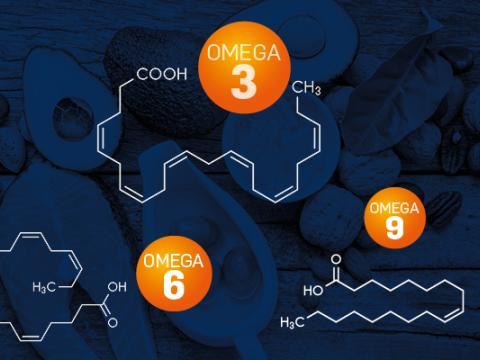The effects of vitamin D on the immune system
Vitamins, according to the general definition of the term, are exclusively provided by the diet.
Due to its mode of action, vitamin D is in fact a pre-hormone: it can also be synthesised by the body, in the skin. It circulates in the blood to activate or deactivate certain cell mechanisms. Vitamin D notably has an influence on our immune system, at various levels (2) (3):
- Vitamin D maintains the integrity of the intestinal mucous membrane due to its action on the proteins which make up the junctions between the intestinal cells. Inside the intestine, which is a potential transit point for pathogens into the blood circulation, there is only one way the pathogens can enter the blood and that is via the intestinal wall. When this wall is impaired, it becomes hyperpermeable and can let these pathogens pass through. A healthy intestinal wall and a diverse intestinal microbiota are essential for keeping pathogens out.
- Vitamin D acts on the innate immune system: it stimulates the macrophages and dendritic cells, which are the immune system’s “first line of defence”. In this way, our body is able to react rapidly in response to an attack.
- Vitamin D also stimulates the adaptive immune system: it increases the number of the lymphocytes, which leads to the generation of an anti-inflammatory effect.
- Vitamin D increases the pathogen elimination mechanisms, such as the synthesis of antimicrobial agents by the immune system cells.
- Finally, vitamin D has been studied in detail in the context of the prevention of acute pulmonary infections. It appears that a vitamin D3 supplementation reduces the risk of contracting an infection of the airways.
The different forms of vitamin D: vitamin D2 and vitamin D3
Vitamin D is found in two forms:
- Vitamin D2, present in plants and vegetables
- Vitamin D3, present in meat as well as in plants and vegetables.
When our skin manufactures vitamin D, it is in fact producing vitamin D3. Both vitamin D2 and vitamin D3 can be taken as a supplement, with their quantities expressed in international units.
International units establish a universal reference for the dosage of the active forms of vitamins and hormones. For information, one international unit = 0.025 micrograms of vitamin D3, and 1 ug of vitamin D = 40 IU.
Form D3, better metabolised by the body
After being ingested, all the vitamin D3 binds to a transport protein in the blood and is taken to the liver. When it arrives in the liver, its chemical structure is modified to produce a new form of vitamin D, known as 25(OH)D3. It is this so-called “circulating” form which is assayed when a blood sample is taken to determine your vitamin D level.
The active form of vitamin D is synthesised from this circulating form at a rate that varies depending on the body's needs. When signals indicating that there is a requirement are received, the body responds by further modifying the chemical structure of the circulating vitamin D, with this process occurring primarily in the kidneys (as well as in other cells). It is this step which forms the active vitamin D (calcitriol).
Compared with vitamin D2, vitamin D3 is more readily metabolised and is thus more effectively converted to the active form of vitamin D (4).
The correct level of vitamin D
The correct level of vitamin D for an adult is a circulating level of not less than 75 nmol/l (or 30 ng/ml). This test should be performed at the end of winter or start of spring.
Approximately 80% of French people have a level of less than 75 nmol/L, and are thus low in vitamin D.
A vitamin D deficiency is defined as being a level of less than 10 – 12 ng/ml, which is much more uncommon and primarily affects the very old who also have an underlying condition such as kidney disease.
There are various factors which might explain the overall low levels in the population.
- Insufficient exposure to sunshine during the winter period. It is worth noting that, for a healthy adult, exposing your hands, forearms and face to sunlight for just 10 to 15 minutes, two or three times a week, from April to October, is sufficient to meet the requirements (1). Opportunities for the body to synthesise vitamin D are not, however, always available in northern Europe, and notably in the winter when insolation levels are low.
- Atmospheric pollution and cloud cover, which filter out the UVB rays that the skin uses to synthesise vitamin D3
- A diet low in vitamin D2 and D3 (one of the main sources of vitamin D3 is oily fish)
- It should also be noted that older adults and people with pigmented skin (the pigmentation filters out the UVB) are less well able to synthesise vitamin D3.
Prevention: how much vitamin D3 should a supplement provide ?
The French national academy of medicine recommends a daily intake of 800 to 1,000 IU. This data is taken from a reminder of its recommendations, published in May 2020 in response to the Covid-19 pandemic. (5)
Taking a magnesium supplement at the same time may be recommended, since it helps to activate vitamin D (6). Finally, according to the scientific literature, vitamin D is only toxic when the doses taken are excessive, of the order of 50,000 IU/ day, and for a period of several months.
For more individualised information, ask for advice from a doctor or pharmacist, who has ideally been trained in micronutrition.






